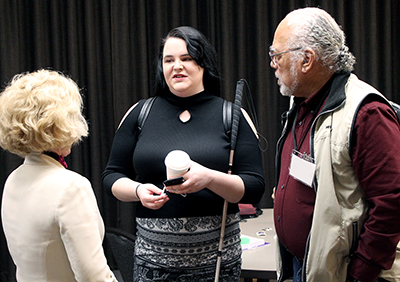What institutional strategies can reduce barriers to academic STEM careers faced by women with disabilities?
Women with disabilities in academic science, technology, engineering, and mathematics (STEM) careers face a variety of challenges.
Women with disabilities in academic science, technology, engineering, and mathematics (STEM) careers face a variety of challenges.
As institutions seek to leverage the benefits of diversity, application pools for faculty positions have become increasingly diverse, inclusive of faculty with disabilities who bring unique and valuable perspectives and talents to the workplace. However, the inaccessible design of the employment application process, as well as many campus facilities, software tools, services, and online resources, continue to erect barriers to some applicants and employees with disabilities, including those who are also members of other marginalized groups.
Application pools for faculty positions in science, technology, engineering, and mathematics (STEM) have become increasingly diverse. However, the inaccessible design of the employment application process, as well as facilities, software tools, services, and online resources on many campuses, continue to erect barriers to some applicants and employees with disabilities, including those who are also members of other marginalized groups.
One of the best ways to make an institution welcoming and inclusive is to use universal design to make offerings accessible from the beginning. Below are various resources on how to make campus accessible.
Equal Access: Universal Design of Your ADVANCE Project
A checklist for making your projects welcoming and accessible.

The AccessADVANCE project's inaugural capacity building institute (CBI), held on May 25th and 27th, 2021, shared challenges and solutions regarding the recruitment and participation of women with disabilities in ADVANCE activities and STEM careers.
The North Dakota State University (NDSU) NSF ADVANCE team/project recognized that their diversity, equity, and inclusion efforts attended too little to the unique experiences and perspectives of faculty experiencing dis/ability. In particular, the project team wanted to promote a campus commitment to address workplace and campus climate issues with respect to science, technology, engineering, and mathematics (STEM) women faculty members with dis/ability. But where to begin?